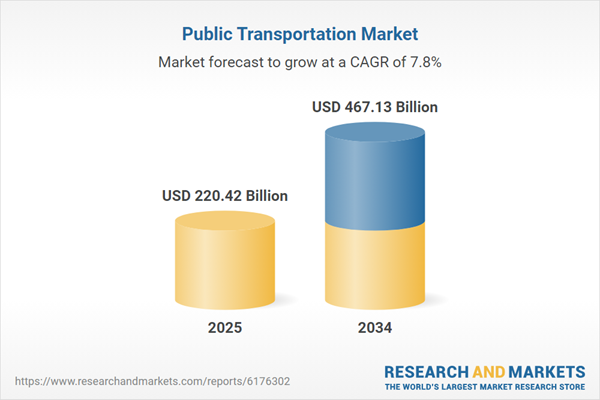Report on the Busworld Europe Exhibition: Aligning with Sustainable Development Goals
Executive Summary
The Busworld Europe Exhibition in Brussels provided a comprehensive overview of the bus and coach industry’s trajectory towards sustainable mobility. Innovations presented by Original Equipment Manufacturers (OEMs) demonstrated a collective commitment to advancing several United Nations Sustainable Development Goals (SDGs), particularly SDG 7 (Affordable and Clean Energy), SDG 9 (Industry, Innovation, and Infrastructure), SDG 11 (Sustainable Cities and Communities), and SDG 13 (Climate Action). The industry’s focus on electrification, alternative fuels, and automation signals a fundamental shift towards cleaner, safer, and more efficient public transport systems.
Technological Advancements in Support of Global Sustainability Targets
Electrification and Hydrogen Power for Climate Action (SDG 13) and Clean Energy (SDG 7)
The exhibition highlighted significant progress in zero-emission vehicle technology, directly contributing to the decarbonization of transport and the transition to clean energy sources. Key examples include:
- MAN Lion’s Coach 14E: The first fully electric long-distance coach from a European manufacturer, representing a milestone for zero-emission intercity travel.
- MCV C127 Fuel Cell Low Entry: A hydrogen-electric bus designed for practical urban applications, promoting the use of alternative clean fuels.
- Zhongtong All-Electric Double-Decker: A demonstration of high-capacity electric mobility solutions for dense urban environments, crucial for achieving SDG 11.
- VDL Futura 3 FHD-129 LHD: An example of optimizing conventional engine technology for improved efficiency through aerodynamics and lightweight construction, serving as a transitional solution.
Automation and Intelligent Systems for Sustainable Infrastructure (SDG 9 & SDG 11)
The development of autonomous vehicles is poised to enhance the resilience and efficiency of urban transport infrastructure, a core objective of SDG 9 and SDG 11. Noteworthy developments were:
- OTOKAR e-CENTRO: A fully autonomous bus showcased navigating independently, illustrating the viability of automated public transport.
- Karsan E-ATAK and E-JEST Models: Autonomous minibuses with a reported 99.5% success rate in real-world conditions, offering a solution to driver shortages and improving service accessibility on challenging routes.
Market Analysis and Regional Contributions to Sustainable Transport
The Midi and Minibus Segments as Catalysts for Innovation
The midi and minibus market, with an estimated 5% Compound Annual Growth Rate (CAGR), is a significant driver of sustainable transport innovation. This segment’s agility allows for the rapid deployment of new technologies that support sustainable urban mobility (SDG 11).
Global Decarbonization Initiatives
Regional policies and investments are accelerating the adoption of sustainable bus technologies worldwide. This progress can be observed across several key markets:
- Europe: The implementation of low-emission zones is driving the adoption of EV minibuses in urban contracts, directly contributing to cleaner cities (SDG 11) and climate action (SDG 13).
- United States: Federal funding is accelerating the electrification of school bus fleets, with smaller Type A buses projected to constitute 30-40% of new sales by 2030, supporting SDG 7.
- Asia-Pacific: China’s leadership in EV production, alongside expanding pilot programs in India and Japan, is advancing regional progress towards SDG 9 and SDG 11.
Integration of Safety and Vehicle Intelligence for Health and Well-being (SDG 3)
Beyond powertrain innovation, the industry is advancing vehicle intelligence to improve safety, directly supporting SDG 3 (Good Health and Well-being) by aiming to reduce road traffic accidents. Key technologies include:
- Enhanced Safety Systems: Yutong is developing integrated systems for advanced fire protection and collision prevention.
- AI-Assisted Driving: The incorporation of artificial intelligence features is improving both passenger and driver safety, making public transport a safer mode of travel for communities.
Conclusion: Reshaping Mobility for a Sustainable Future
The Busworld exhibition confirmed that electrification, automation, and intelligent safety systems are converging to redefine the bus and coach industry. These advancements are not merely technological but are fundamental to achieving global sustainability targets. The next generation of public transport vehicles will play a critical role in developing sustainable cities and communities (SDG 11) that are cleaner, safer, and more efficiently connected.
Analysis of the Article in Relation to Sustainable Development Goals (SDGs)
1. Which SDGs are addressed or connected to the issues highlighted in the article?
The article on the future of bus and coach transport connects to several Sustainable Development Goals (SDGs) by focusing on innovation, clean energy, safety, and sustainable urban development. The primary SDGs addressed are:
- SDG 3: Good Health and Well-being: By focusing on technologies that improve passenger and driver safety.
- SDG 7: Affordable and Clean Energy: Through the industry’s shift towards electrification, hydrogen power, and solar energy integration.
- SDG 9: Industry, Innovation, and Infrastructure: By showcasing technological advancements, innovation in the automotive industry, and the development of sustainable transport infrastructure.
- SDG 11: Sustainable Cities and Communities: By promoting cleaner, safer, and more efficient public transport systems to improve urban living.
- SDG 13: Climate Action: Through the central theme of decarbonisation and the development of zero-emission vehicles to combat climate change.
2. What specific targets under those SDGs can be identified based on the article’s content?
Based on the article’s discussion of technological advancements and policy drivers, several specific SDG targets can be identified:
-
SDG 3: Good Health and Well-being
- Target 3.6: Halve the number of global deaths and injuries from road traffic accidents. The article highlights this target through its mention of Yutong’s technologies that “integrate enhanced fire protection, collision prevention, and AI-assisted driving features aimed at improving passenger and driver safety.”
-
SDG 7: Affordable and Clean Energy
- Target 7.2: Increase substantially the share of renewable energy in the global energy mix. This is addressed by the showcase of vehicles like the MAN Lion’s Coach 14E, which has “roof-mounted solar panels,” and the overall industry shift to electric and hydrogen power, which are cleaner energy sources.
- Target 7.3: Double the global rate of improvement in energy efficiency. The VDL Futura 3 coach is described as combining “improved aerodynamics, lightweight construction, and an optimised driveline,” which are direct measures to improve energy efficiency.
-
SDG 9: Industry, Innovation, and Infrastructure
- Target 9.4: Upgrade infrastructure and retrofit industries to make them sustainable… with greater adoption of clean and environmentally sound technologies. The entire article is a testament to this target, describing how the bus and coach industry is being reshaped by “electrification, alternative energy, and automation” to create a more sustainable transport sector.
-
SDG 11: Sustainable Cities and Communities
- Target 11.2: Provide access to safe, affordable, accessible and sustainable transport systems for all, improving road safety. The development of “cleaner, safer, and more efficient transport” through electric, hydrogen, and autonomous buses directly supports this target. Autonomous buses are noted to “help cities address driver shortages and keep services running smoothly.”
- Target 11.6: Reduce the adverse per capita environmental impact of cities, including by paying special attention to air quality. The article’s focus on “zero-emission intercity travel,” “low emission zones,” and the development of electric and hydrogen buses directly addresses the goal of reducing urban air pollution.
-
SDG 13: Climate Action
- Target 13.2: Integrate climate change measures into national policies, strategies and planning. The article states that “decarbonisation is a common link” across regions and mentions policy-driven actions like “low emission zones” in Europe and “federal funding” in the US for the “electrification of school fleets,” showing the integration of climate goals into policy.
3. Are there any indicators mentioned or implied in the article that can be used to measure progress towards the identified targets?
The article mentions or implies several indicators that can be used to measure progress:
- Proportion of clean-energy vehicles: The article provides a specific forecast that smaller “Type A buses [are] forecast to make up 30–40% of new sales by 2030” in the US. This percentage serves as a direct indicator for the adoption of cleaner technologies (Targets 7.2, 9.4, 11.6).
- Technological success rate: For autonomous vehicles, Karsan’s models are claimed to have a “99.5% success rate in real-world conditions.” This metric is a key performance indicator for the safety and reliability of new transport systems (Targets 3.6, 11.2).
- Market growth rate: The minibus market is “expanding at an estimated 5% CAGR,” which indicates the growth and investment in this specific segment of sustainable transport (Target 9.4).
- Vehicle specifications: The article details specifications like the “480 kWh battery” of the MAN Lion’s Coach 14E and the development of a “hydrogen-electric bus.” These technical details serve as indicators of the advancement and capability of clean energy technology in the transport sector (Target 7.3).
- Policy implementation: The mention of “low emission zones” and “federal funding” for electrification are indicators of government action and policy integration aimed at promoting sustainable transport and climate action (Targets 11.6, 13.2).
4. Table of SDGs, Targets, and Indicators
| SDGs | Targets | Indicators Identified in the Article |
|---|---|---|
| SDG 3: Good Health and Well-being | 3.6: Halve global deaths and injuries from road traffic accidents. | Implementation of “collision prevention, and AI-assisted driving features”; Claimed “99.5% success rate” of autonomous buses in real-world conditions. |
| SDG 7: Affordable and Clean Energy | 7.2: Increase the share of renewable energy. 7.3: Improve energy efficiency. |
Development of fully electric and hydrogen-electric buses; Use of “roof-mounted solar panels”; “Improved aerodynamics, lightweight construction, and an optimised driveline” in new models. |
| SDG 9: Industry, Innovation, and Infrastructure | 9.4: Upgrade industries with clean and environmentally sound technologies. | Industry-wide shift to “electrification, alternative energy, and automation”; Market expansion at “5% CAGR” for the minibus segment. |
| SDG 11: Sustainable Cities and Communities | 11.2: Provide access to safe, sustainable transport systems. 11.6: Reduce the adverse per capita environmental impact of cities (e.g., air quality). |
Development of “cleaner, safer, and more efficient transport”; Deployment of autonomous buses to address driver shortages; Focus on “zero-emission” vehicles and establishment of “low emission zones”. |
| SDG 13: Climate Action | 13.2: Integrate climate change measures into national policies. | “Decarbonisation is a common link” across regions; “Federal funding is fuelling the electrification of school fleets” in the US. |
Source: just-auto.com






